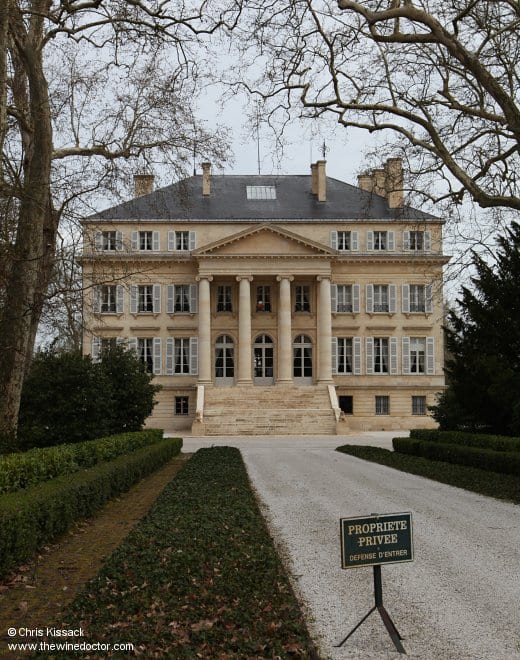Margaux
Having described the vineyards of Graves, and the northern enclave of Pessac-Léognan which still has a foothold within the suburbs of Bordeaux in the form of some illustrious châteaux including Château Haut-Brion and Château La Mission Haut-Brion, we now circle round the city to explore the vineyards to the north.
The Médoc peninsula to the north of the city of Bordeaux is a land of temperate maritime climate, where soils play an important role in ensuring ripening and quality. For this reason the Médoc peninsula can be very roughly and unevenly divided into two. First, and foremost in terms of surface area, are the colder, more clay-rich gravel soils which are found for much of the route north through the Médoc, the clay coming to dominate in the northern section, from Lesparre-Médoc northwards. These are the lesser, heavier soils where Cabernet Sauvignon does not ripen so well, and indeed the more clay in the soil the more likely the viticulteur is to plant Merlot instead of Cabernet. In general these soils have the non-communal Haut-Médoc appellation, or in the far north the more basic Médoc appellation.
Second, there are the gravelly soils which help the late-ripening Cabernet Sauvignon reach full maturity before picking. These gravels, largely of Würmian and Rissian origin in this area (in contrast to the Günzian gravels in Pessac, Mérignac and Talence), are found in fairly distinct beds next to the Gironde estuary to the east, and with clay and then more sandy soils to the west. The communes blessed with these deep beds of gravel have rightly gained some renown for the quality of their wines, always based largely on Cabernet Sauvignon, which ripens so well on these gravel beds.
I will give due attention to the Haut-Médoc and Médoc appellations in later instalments of this guide, but I am going to concentrate first on the four communes blessed with gravel. And the first of these communes is Margaux.

